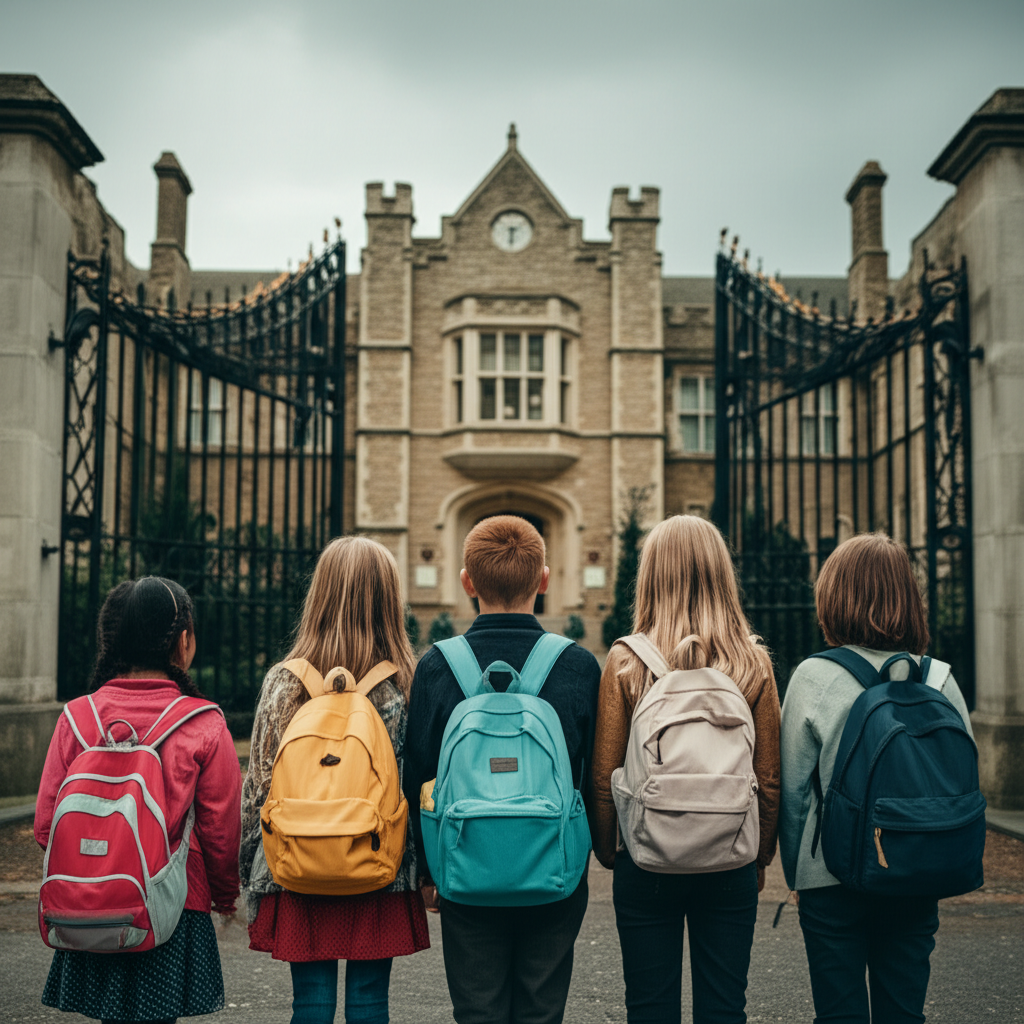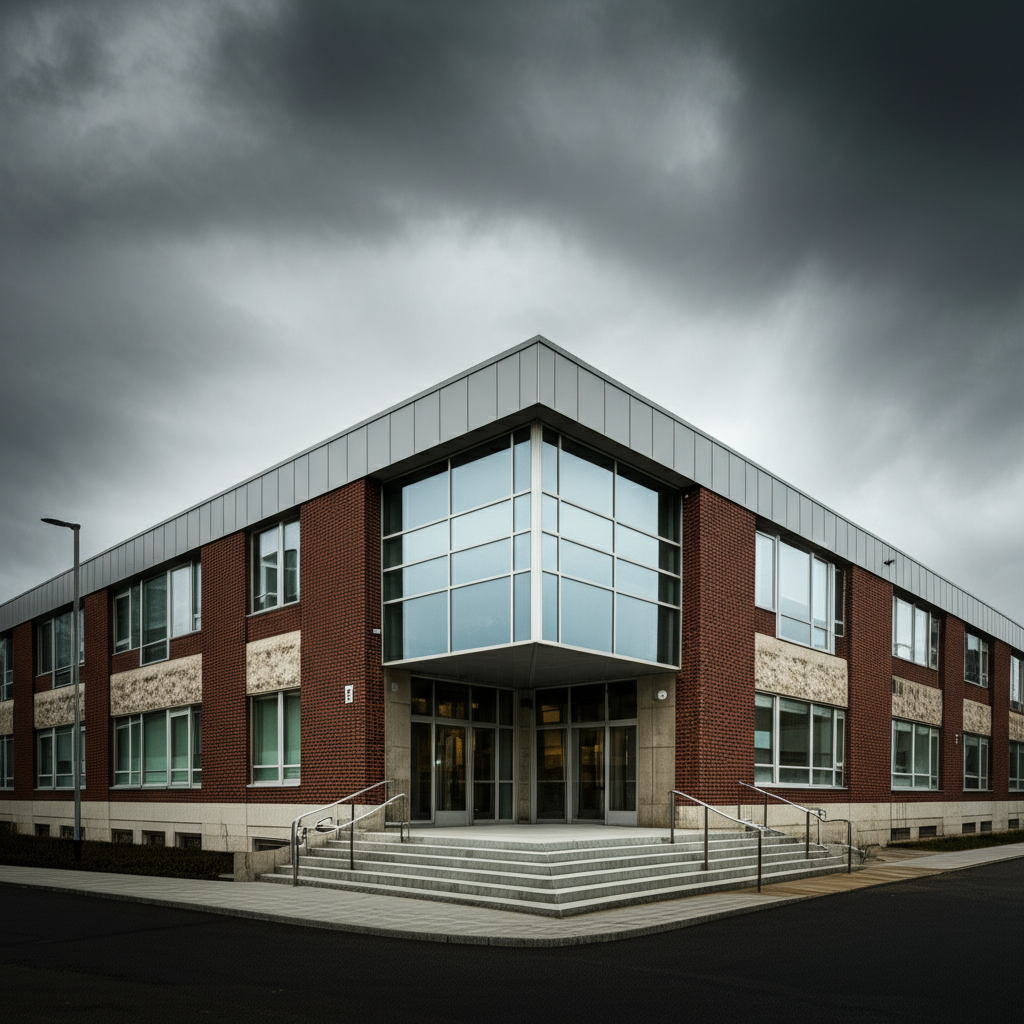Quick Summary: While private schools offer unique benefits, they aren’t always the best choice for every student. Understanding the potential downsides, such as high costs, limited diversity, and specific academic philosophies, can help families make the most informed decision for their child’s education. This guide explores 10 reasons why private schools might not be ideal.
Choosing the right school for your child is a big decision. Many parents consider private schools, attracted by their smaller class sizes or specialized programs. However, it’s important to look at the whole picture. This article will help you understand the other side of the coin. We’ll explore 10 reasons why private schools might not be the best fit for your family, offering clear insights to guide your choice. Let’s dive into what makes a private school a less-than-ideal option for some.
Understanding the Private School Landscape
Private schools operate independently from government funding and oversight. This independence allows them to set their own curriculum, admission standards, and tuition fees. While this can lead to innovative educational approaches and a strong sense of community, it also presents potential challenges. For families weighing their options, it’s crucial to consider how these differences might impact their child’s learning experience, social development, and the family’s financial well-being.
10 Reasons Why Private Schools Are Bad: Avoiding Them
When considering educational settings, it’s wise to explore all angles. While private schools often get a lot of attention for their perceived advantages, there are several important reasons why they might not be the best choice for every student or family. Understanding these potential drawbacks can empower you to make a decision that truly aligns with your child’s needs and your family’s values. Let’s explore these 10 reasons why private schools are bad for some, and how to avoid them.
1. The High Cost of Tuition
One of the most significant hurdles for many families is the tuition fee. Private schools, unlike public schools, rely on tuition payments and donations to operate. These costs can range from a few thousand dollars per year to tens of thousands, depending on the school’s prestige, location, and offerings. This financial burden can strain family budgets, and in some cases, the expense may outweigh the perceived benefits, especially if the school’s academic outcomes are not significantly different from well-funded public options.
Consider the long-term financial implications. Investing in private education can mean less money available for other important areas like college savings, extracurricular activities, or even family vacations. It’s essential to compare the total cost of attendance, including fees for uniforms, books, field trips, and other hidden expenses, against the educational value provided. Sometimes, a more affordable public school education, supplemented with targeted enrichment activities, can offer a better return on investment.
2. Limited Diversity and Inclusivity
Due to their selective admissions and tuition requirements, many private schools tend to have less socioeconomic, racial, and cultural diversity compared to public schools. This lack of diversity can limit a child’s exposure to different perspectives and life experiences, which are vital for developing a well-rounded understanding of the world. A diverse student body prepares children for a diverse workforce and society, fostering empathy and critical thinking skills through interaction with peers from various backgrounds.
A homogenous environment might inadvertently create an echo chamber, where certain viewpoints are overrepresented, and others are underrepresented or absent. This can hinder a child’s ability to navigate and appreciate the complexities of a multicultural society. Public schools, by their nature, often reflect the broader community, offering a richer tapestry of backgrounds and experiences that can significantly benefit a child’s social and emotional growth.
3. Potential for Social Stratification
The elite nature of some private schools can sometimes foster a sense of social stratification. Students may interact primarily with peers from similar socioeconomic backgrounds, potentially leading to a disconnect with the broader societal realities. This can create an environment where children are less exposed to the challenges and perspectives of those from different walks of life, which is an important part of developing social awareness and a sense of civic responsibility.
While a strong school community is desirable, it’s also important that this community prepares students for the diverse world they will enter. An overly exclusive environment might not equip them with the skills to interact effectively and empathetically with people from all backgrounds. Public schools, with their open-door admissions, tend to create more naturally diverse social circles, fostering a broader understanding of community and interconnectedness.
4. Curriculum Rigidity and Specific Philosophies
Some private schools adhere to very specific educational philosophies, such as Montessori, Waldorf, or a particular religious doctrine. While these can be excellent for some students, they may not suit everyone. A rigid curriculum might not cater to a child’s unique learning style, pace, or interests. If a child thrives on a more traditional academic approach or needs a flexible learning environment, a highly specialized private school might be a poor fit.
It’s crucial to thoroughly research the school’s educational philosophy and curriculum to ensure it aligns with your child’s learning needs and your family’s educational values. A school that prioritizes rote memorization over critical thinking, or vice versa, might not foster the holistic development you seek. Public schools, while often adhering to state standards, can offer a wider range of teaching methodologies and a more adaptable curriculum.
5. Limited Extracurricular and Specialized Programs
While some private schools boast extensive extracurriculars, others, especially smaller ones, may have limited options. This can be a drawback for students who want to explore a wide range of activities, from sports and arts to debate clubs and community service. Public schools, often drawing from a larger student population and community resources, can frequently offer a broader array of clubs, teams, and specialized programs.
If your child has a passion for a particular sport, art form, or academic pursuit, it’s important to verify that the private school can adequately support and nurture that interest. The absence of certain programs might mean your child misses out on valuable developmental experiences or opportunities to discover new talents. It’s worth comparing the breadth and depth of offerings between private and public institutions.
6. The Pressure of High Expectations
Many private schools cultivate an environment of high academic expectations, which can be beneficial. However, for some students, this can translate into undue pressure, stress, and anxiety. If a child struggles to meet these demanding standards, they may experience feelings of inadequacy or burnout. It’s important to assess your child’s temperament and resilience when considering a school known for its rigorous academic culture.
The emphasis on achievement, particularly in college preparatory schools, can sometimes overshadow a child’s overall well-being. While striving for excellence is important, it should not come at the expense of mental health. A supportive environment that balances challenge with encouragement is key. Public schools, while also aiming for academic success, may offer a more varied pace and approach to learning that can be less overwhelming for some students.
7. Accountability and Oversight Differences
Public schools are accountable to elected school boards and government agencies, ensuring a level of transparency and adherence to state standards. Private schools, while often accredited, have more autonomy and may face less public scrutiny. This can mean that issues related to curriculum, teacher qualifications, or student welfare might not be addressed with the same level of public oversight.
While many private schools are excellent, the lack of direct public accountability means parents need to do more due diligence. It’s important to understand how the school handles complaints, ensures teacher quality, and meets educational standards. Resources like the National Association of Independent Schools (NAIS) offer accreditation standards, but the oversight is different from that of public institutions regulated by state departments of education.
8. Lack of Special Education Resources
While some private schools do offer special education services, they are not mandated by law to provide the same level of support as public schools under the Individuals with Disabilities Education Act (IDEA). Public schools are required to identify, evaluate, and provide a Free Appropriate Public Education (FAPE) to eligible students with disabilities. This can include specialized instruction, therapies, and accommodations tailored to individual needs.
For students with specific learning disabilities, ADHD, autism, or other special needs, public schools are generally better equipped to provide comprehensive support. If your child requires specialized educational services, it’s crucial to investigate a private school’s capacity to meet those needs thoroughly. The resources and expertise available in a public school’s special education department may be far more extensive than what a private institution can offer.
9. Potential for Niche Environments
Some private schools cater to very specific niches, such as religious affiliations, particular pedagogical approaches, or even specific career paths from an early age. While this focus can be advantageous for some, it can also be limiting for others. A child who isn’t aligned with the niche focus might feel out of place or not receive the broad educational foundation they need.
For example, a school heavily focused on religious instruction might not be suitable for a child from a different faith or no faith background. Similarly, a school pushing students towards a single career path too early might stifle exploration and broader intellectual development. It’s important that the school’s niche doesn’t narrow a child’s perspective or opportunities prematurely.
10. Transportation Challenges
Public school districts often provide bus services, making transportation convenient and cost-effective for families. Many private schools do not offer transportation, or their routes may be limited, requiring parents to arrange and pay for private transportation, carpools, or for their child to use public transport. This can add significant time and expense to the daily school routine, especially for families living far from the school.
The logistical challenges of transportation can be a major factor for busy families. If a private school is far from your home, you’ll need to factor in the daily commute time for your child and the potential costs associated with it. For some, the convenience and cost savings of public school transportation can be a deciding factor.
Comparing Private and Public School Options

Making an informed choice between private and public schools involves weighing various factors. Here’s a table that summarizes some key differences:
| Feature | Private Schools | Public Schools |
|---|---|---|
| Funding | Tuition fees, donations, endowments | Tax revenue, government funding |
| Tuition Cost | Typically high, varies widely | Free (funded by taxes) |
| Admissions | Selective, based on criteria (grades, tests, interviews) | Open to all residents within the district |
| Curriculum | Independent, can be specialized (e.g., religious, Montessori) | Follows state and federal standards |
| Teacher Certification | May vary, not always state-mandated | State-certified teachers required |
| Special Education | May offer limited services, not legally mandated to the same extent | Legally mandated to provide FAPE under IDEA |
| Diversity | Often less diverse (socioeconomic, racial, cultural) | Generally more diverse, reflecting community |
| Oversight | Less public oversight, often accredited | Government oversight, school boards |
| Transportation | Rarely provided, or limited | Often provided by the district |
When Private Schools Might Be the Right Fit (and When They Aren’t)
It’s important to acknowledge that private schools are not inherently “bad.” For some families, the benefits of a specific private school—like a strong religious community, a unique educational philosophy that perfectly matches a child’s needs, or exceptional resources for a particular talent—can outweigh the drawbacks. However, the reasons discussed above highlight critical areas where private schools might fall short for many.
For instance, if your child thrives in a highly structured, academically rigorous environment and your family can comfortably afford the tuition, a particular private school might be an excellent choice. Conversely, if financial strain is a concern, if your child benefits from diverse social interactions, or if they have specific learning needs that require robust, legally mandated support, then a public school might offer a more suitable and equitable environment.
Making the Best Choice for Your Child
The decision of where to send your child to school is deeply personal. It requires careful consideration of your child’s individual personality, learning style, and needs, as well as your family’s financial situation, values, and priorities. Don’t feel pressured by the allure of private education; instead, focus on finding the environment that will best foster your child’s growth, happiness, and academic success.
Here are some steps to help you navigate this decision:
- Assess Your Child’s Needs: Consider their learning style, social temperament, academic strengths, and any special educational requirements.
- Evaluate Your Financial Situation: Honestly assess the long-term affordability of private school tuition and associated costs.
- Research Public School Options: Explore the public schools in your district. Look at their performance data, available programs, and parent reviews. Resources like the GreatSchools.org website can provide valuable insights.
- Investigate Private School Offerings: If considering private schools, thoroughly research their curriculum, philosophy, faculty qualifications, diversity, and extracurriculars.
- Visit Campuses: Whenever possible, visit both public and private schools. Observe classrooms, speak with teachers and administrators, and get a feel for the school’s culture.
- Talk to Other Parents: Gather perspectives from families who have experience with both public and private schools in your area.
- Consider the Long Term: Think about how the school choice will impact your child’s preparation for college, career, and life.
Frequently Asked Questions (FAQ)

Are all private schools expensive?
Most private schools charge tuition, and costs can vary widely, from a few thousand to tens of thousands of dollars annually. However, some private schools offer financial aid or scholarships, and there are also some lower-cost options, such as parochial schools.
Do private schools have better academic results than public schools?
While many private schools boast strong academic records, research on this is mixed. Factors like student selection and parental involvement often contribute to private schools’ success, rather than the school type alone. Many public schools also achieve excellent academic outcomes.
Can my child transfer to a public school if a private school doesn’t work out?
Yes, in most cases, you can transfer your child to a public school. Public schools are generally required to accept students within their district, though specific enrollment procedures may apply.
Are private school teachers less qualified than public school teachers?
Teacher certification requirements differ. Public school teachers must typically be state-certified. Private school teachers may or may not hold state certifications, but they are often hired based on their expertise and experience in their subject areas.
Do private schools offer more individualized attention?
Many private schools advertise smaller class sizes, which can lead to more individualized attention. However, the quality of instruction and the teacher’s ability to connect with students are key, regardless of class size or school type.
What if my child has special needs? Is a private school a good option?
Public schools are legally obligated to provide a Free Appropriate Public Education (FAPE) to students with disabilities under federal law (IDEA). While some private schools offer special education services, they may not be as comprehensive or legally mandated as those in public schools.
Conclusion
The decision to choose a private school is significant, and it’s wise to approach it with a balanced perspective. While private institutions can offer unique advantages, understanding the potential downsides—such as the substantial financial commitment, the possibility of limited diversity, curriculum rigidity, and varying levels of support for special needs—is crucial. By carefully considering these factors and comparing them against the strengths of your local public school options, you can make an informed choice that best supports your child’s educational journey and overall well-being. Remember, the most effective learning environment is one that meets your child’s specific needs and aligns with your family’s values.

